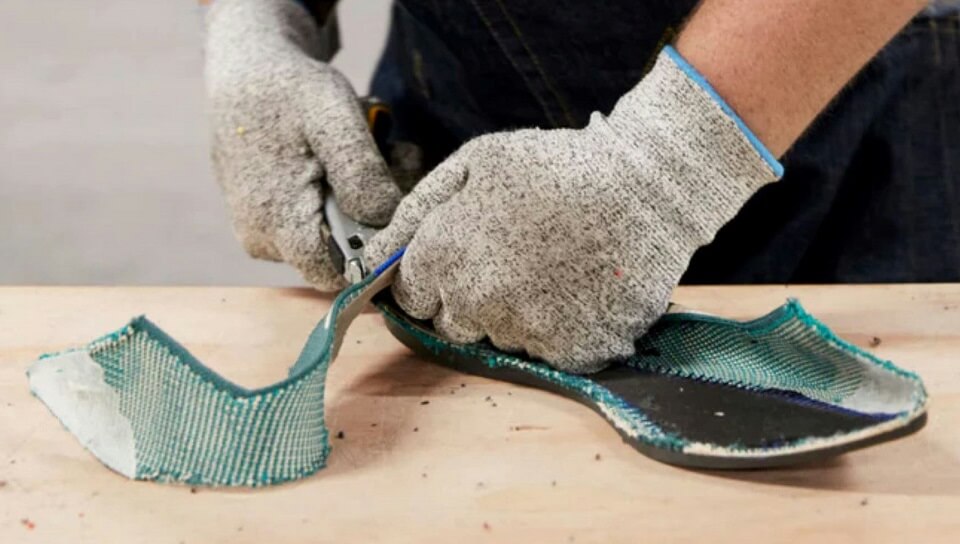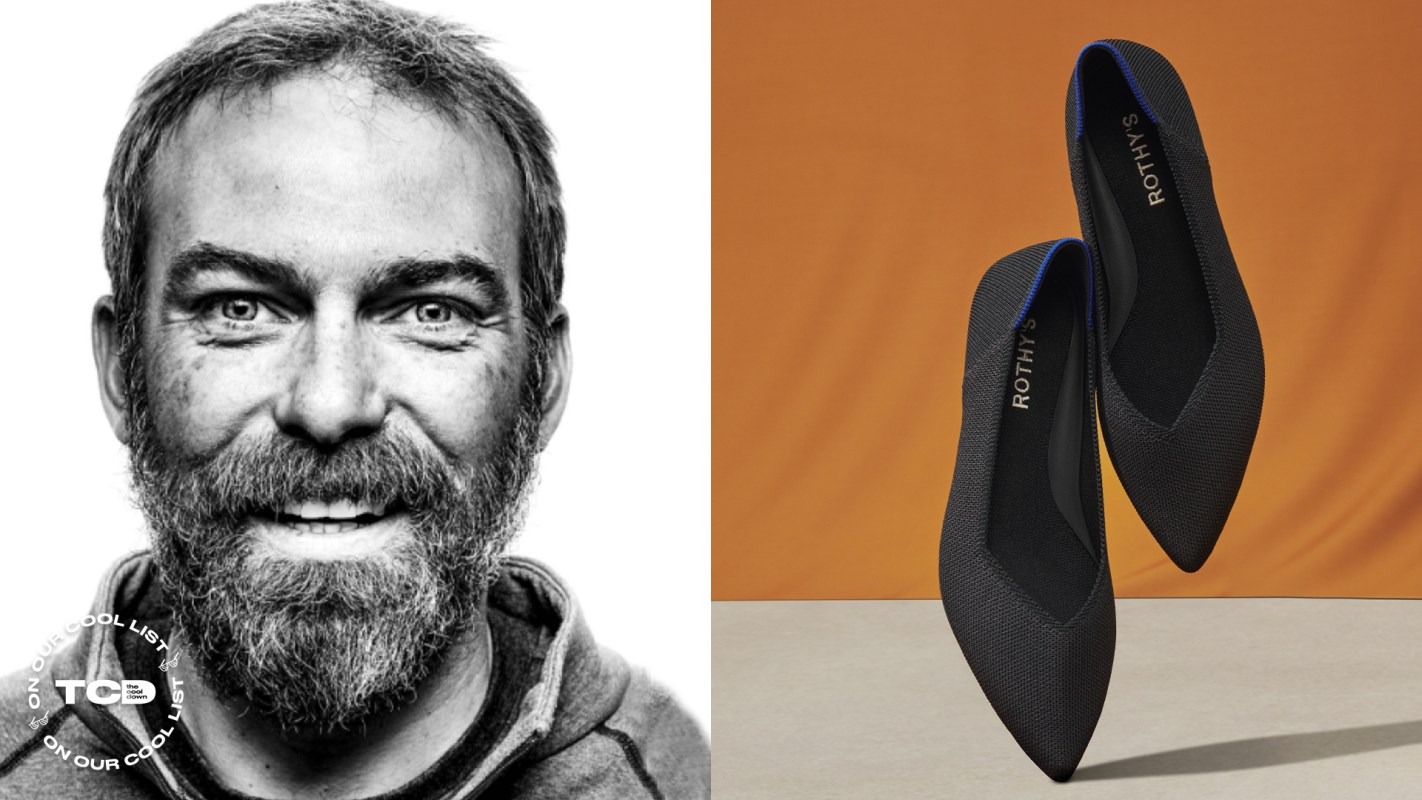Rothy's recycled fiber shoes are not your run-of-the-mill crunchy sustainable chic.
Gone are the days of eco-friendly shoes designed only for the crunchy granola set — Rothy's iconic woven flats come in an endless variety of eye-popping, on-trend colors and patterns that marry style with durability and comfort with practicality (they're famously machine-washable).
They're also made from recycled plastic bottles, keeping millions of them out of our oceans and slashing the impact of footwear manufacturing.
No wonder the startup, a rare "Green Unicorn" valued at over $1 billion, has built a cult following of self-proclaimed "Rothy's Addicts" who join Facebook groups to covet, compare, collect, and customize their (often extensive) Rothy's footwear collections.
In a masterclass of achieving mainstream appeal, Rothy's has found a way to solve both consumer and sustainability problems in one fell swoop with an innovation that makes a shoe that's better, not just greener. Sustainability advocates and fashionistas may not have much in common, but they can agree on this.

The Cool Down spoke exclusively to Rothy's vice president of sustainability, James Rogers, in his first interview in his new role at the company. Rogers came to Rothy's after stints at luxury re-wear brand The Real Real and outdoor brand The North Face.
 Two problems, one solution
Two problems, one solution
"One [problem we set out to solve] is a lack of stylish, versatile, durable shoes. And the other is the environmental impact of the industry, especially the footwear industry. The founders wanted to redesign shoes from the ground up with this in mind."
 Turning waste into value
Turning waste into value
"We're making our shoes with recycled and renewable materials — we make our uppers with recycled plastic bottles, and we've kept 166 million of them out of the landfill today. And we use thread that's made from marine-bound plastic — we've kept over 600,000 pounds of that out of the marine environment. We also take our shoes back to recycle or upcycle at the end of their life."
 Make it better, not just greener
Make it better, not just greener
"It has to be a great shoe first and foremost. Nobody's going to buy a shoe that they don't like that doesn't fit well, just for sustainability. I'm somebody who lives and breathes this stuff, and I'm not going to buy a bad product just because it's sustainable. We're making shoes that not only have that sustainability story, but they're stylish, they're comfortable, they're what we call 'front-of-closet,' the kind of shoe people can wear all day, they can wear to the boardroom, out to dinner, to yoga class, and that versatility is key. Another thing that makes them unique is the washability, that ties to the durability and the sustainability."
 Educating without alienating
Educating without alienating
"We're bringing along that person who lives and breathes sustainability, as well as that person that's maybe new to thinking about sustainability. They're buying the shoe because of comfort, style. Oh, and by the way, they're learning about recycled plastic and why that's a good thing to support. They're learning about how washability actually extends the life of their product. We're doing it in a way that educates people and brings them along without alienating them."
 P.S. It's sustainable
P.S. It's sustainable
"It's pretty common that people, when asked, 'Where'd you get those shoes? What are those shoes?' they say, 'Oh, you know, these are Rothy's. Oh, and by the way, they're made from recycled plastic bottles.' So clearly our messaging is resonating because people are actually spreading that message amongst each other."
 Favorite Rothy's product
Favorite Rothy's product
"The high-top sneakers."
♥️ Favorite non-Rothy's sustainable product
"The one that already exists. When I'm buying something, I'm always looking at, is there a used or refurbished option for it? When I do buy something new, I'm very intentional and thinking about the quality and durability of the product. This shirt I'm wearing is from North Face — it's probably 10 to 15 years old, and that's probably the average age of a lot of the apparel I own. For most people, it's one to two years. I do think about this concept of lifecycle costing — maybe it is worth spending a little bit more to buy that higher-quality product."
 Lightbulb moment
Lightbulb moment
"I had a job in healthcare consulting. I flew all over the country — I had this really big carbon footprint on a personal level. And I kind of just had an 'aha moment.' I've always had a love for the outdoors, but I really started thinking about it in terms of the products I interact with in my daily life. Just using what's already in existence really significantly lowers your impact, so buying things with recycled materials, buying things used, that was a big part of my shift in my consumer journey from a sustainability standpoint."
 Consumers love circular — but they don't call it that
Consumers love circular — but they don't call it that
"People like a shoe that lasts a long time. They like a shoe that at the end of life, the brand will take it back and deal with it for them. They like hearing the story about recycled materials. Are they connecting all of those things as a circular economy? Some yes, but not necessarily. I don't know if they necessarily have to today, but eventually I hope that will be pretty common for people to know and understand. I think the next generation will be more fluent in circularity."
 Challenge to the industry
Challenge to the industry
"We've been focused on doing less bad, but at some point, we have to be thinking about doing more good, where the actual purchase of a product is solving a problem. For example, we're incorporating algae into our products. Algae is a resource that can be considered good or bad depending on the situation. When it's a bloom, it's choking off other wildlife, but it's a resource that can be harvested and used into materials. So by using this algae, you're actually helping address another problem. That's getting to the regeneration idea that it's replacing a fossil-based input, and it's helping solve another problem in the process."
Join our free newsletter for cool news and actionable info that makes it easy to help yourself while helping the planet.









